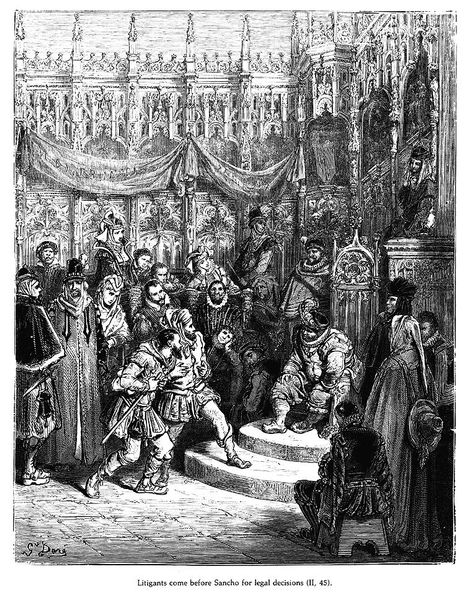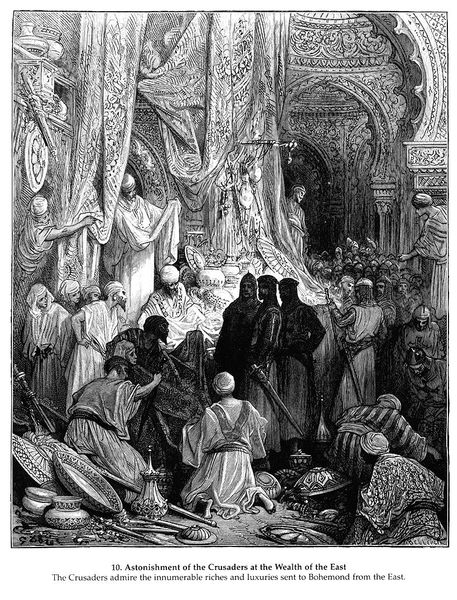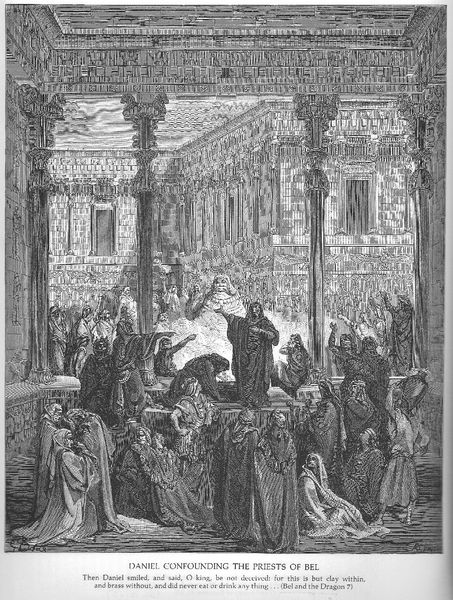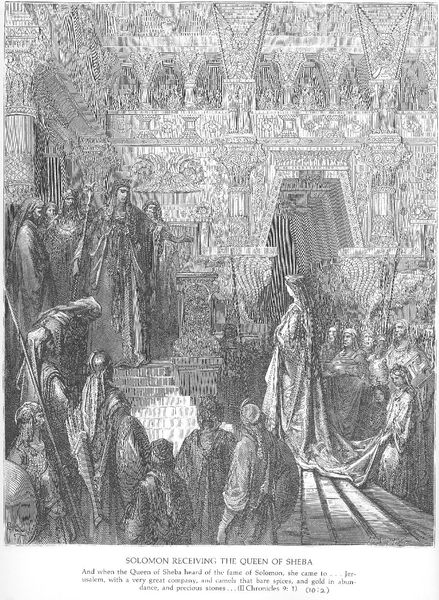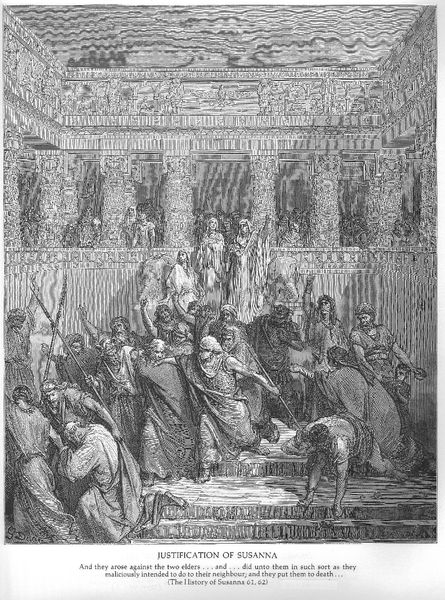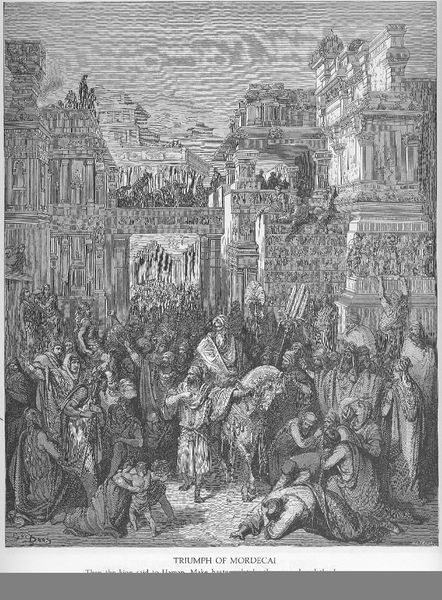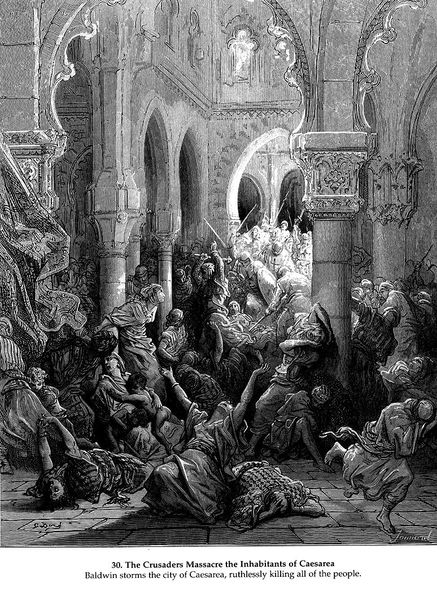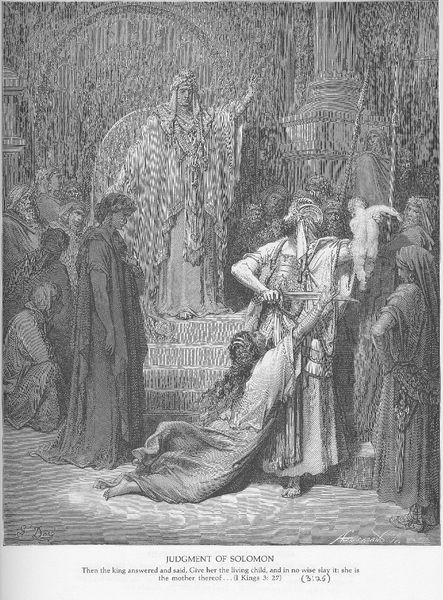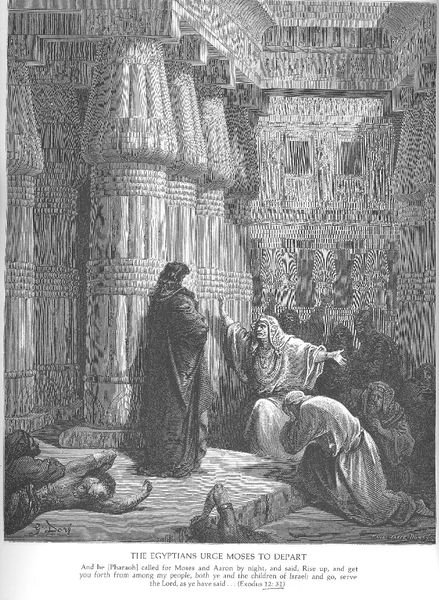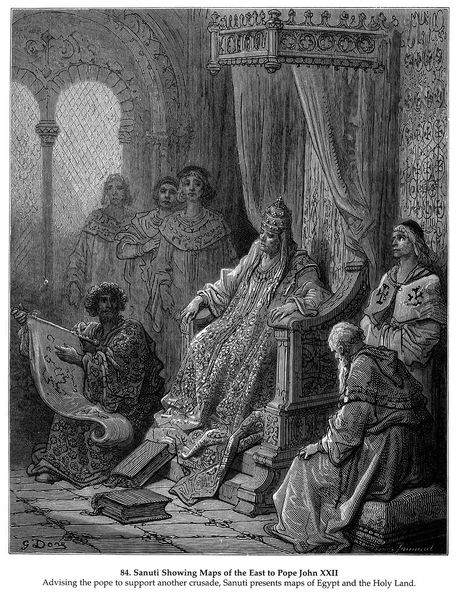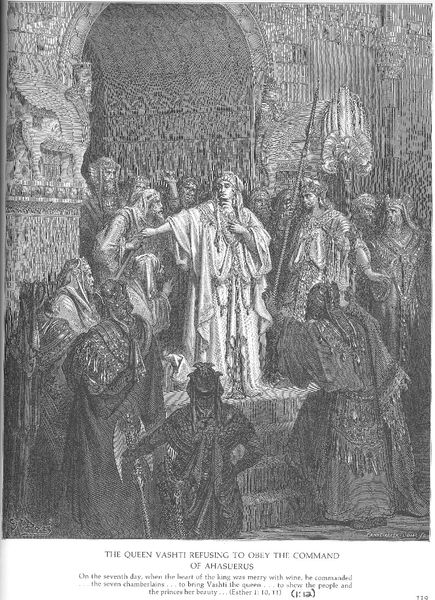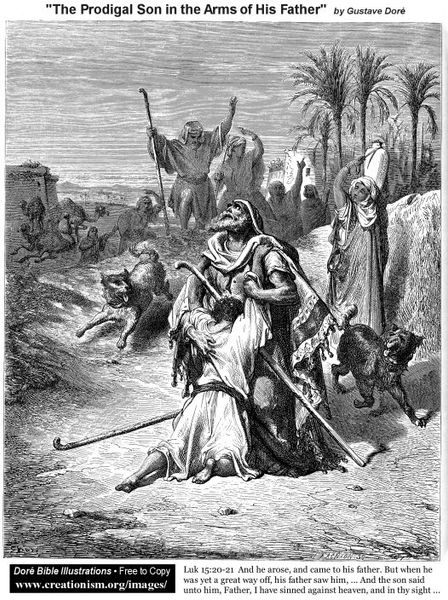
drawing, pen, engraving
#
drawing
#
narrative-art
#
pen illustration
#
figuration
#
romanticism
#
line
#
pen
#
history-painting
#
engraving
Copyright: Public domain
Gustave Doré made this illustration for Cervantes's Don Quixote, probably in the 1860s, using wood engraving. Here, Sancho Panza receives a blessing before setting off to govern his "island," a satirical commentary on power and governance. Doré was a French artist working in a period of great social change, and his art often reflects the tensions between tradition and modernity. This image creates meaning through the use of visual codes associated with medieval romance and chivalry, yet presented in the context of 19th-century realism. The architecture evokes a romanticized past, while the figures are rendered with a critical eye, highlighting the absurdity of the situation. France in the 19th century was grappling with questions of national identity, class divisions, and the role of institutions like the church. To understand Doré's work better, scholars consult historical archives, literary criticism, and studies of 19th-century French culture. Art is always contingent on its social and institutional context.
Comments
No comments
Be the first to comment and join the conversation on the ultimate creative platform.
